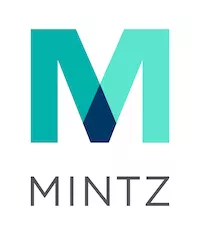Last week, the Federal Circuit invoked the Kessler doctrine in ruling that a district court's dismissal of the plaintiff's patent infringement suit against Amazon barred the plaintiff's subsequent lawsuits against Amazon and its customers in In Re PersonalWeb Technologies, Inc. In particular, the Federal Circuit found that a stipulated dismissal with prejudice operates as an adjudication of non-liability for purposes of the Kessler doctrine, which holds that a losing patent holder cannot later assert the same patents against the winning party or its customers.
The Kessler doctrine is derived from the Supreme Court's decision in Kessler v. Eldred, 206 U.S. 285 (1907), and "fills the gap" left by claim and issue preclusion. The Federal Circuit has generally held that claim preclusion does not apply to acts of alleged infringement that occur after a final judgment in an earlier suit. As to issue preclusion, that doctrine is not available to an alleged infringer unless all of its requirements-a final judgment on the merits, privity of parties, and identity of issues-are met. When neither claim preclusion nor issue preclusion applies, the Kessler doctrine may allow an "adjudged non-infringer to avoid repeated harassment for continuing its business as usual post-final judgment in a patent action where circumstances justify that result." Brain Life, LLC v. Elekta Inc., 746 F.3d 1045, 1056 (Fed. Cir. 2014).
The Federal Circuit's decision last week stems from PersonalWeb's 2011 action against Amazon and one of Amazon's customers, Dropbox, Inc., for patent infringement in the United States District Court for the Eastern District of Texas. After the district court issued its claim construction order, PersonalWeb stipulated to the dismissal of all its claims against Amazon with prejudice. Subsequently, beginning in January 2018, PersonalWeb filed dozens of new patent infringement lawsuits in various districts against website operators, many of which were Amazon's customers. These customer suits relied on the same accused technology that was at issue in the earlier Texas case.
Amazon intervened in the customer suits and moved for summary judgment arguing that, in light of the with-prejudice dismissal of PersonalWeb's action against Amazon in the Texas case, PersonalWeb was barred under the Kessler doctrine from suing Amazon or its customers for any infringement, including infringement after the dismissal with prejudice. Amazon's argument relied on the fact that the same technology was at issue in both the Texas case and the customer suits. In opposition, PersonalWeb argued that the Kessler doctrine did not apply because the 2011 case was dismissed with prejudice before there was any adjudication on the merits regarding the issues of infringement or invalidity and therefore Amazon was not an "adjudged non-infringer." According to PersonalWeb, the Kessler doctrine is based on principles of collateral estoppel and cannot be invoked unless the issue of infringement or invalidity was "actually litigated" in the prior case. The district court granted Amazon's motion and PersonalWeb appealed.
On appeal, the Federal Circuit conceded that it had previously only addressed whether the Kessler doctrine precludes relitigation of issues that were actually litigated. However, the Federal Circuit further explained that none of its earlier decisions required that the issues of non-infringement or invalidity be actually litigated before the Kessler doctrine could be invoked. The Court then found that the earlier dismissal with prejudice in the Texas case was an abandonment of PersonalWeb's claims without reservation and therefore stands as an adjudication that Amazon was not liable for the acts of infringement alleged by PersonalWeb. In coming to its decision, the Federal Circuit explained that the Kessler doctrine granted a "limited trade right" that attaches to the product itself. "The scope of that right is not limited to cases involving a finding of non-infringement that was necessary to the resolution of an earlier lawsuit, but extends to protect any products as to which the manufacturer established a right not to be sued for infringement."
The Federal Circuit noted that the policy underlying the Kessler doctrine would be "ill-served by adopting" a requirement that issues of infringement or validity be "actually litigated." Such a requirement would "practically [] destroy Kessler's judgment rights" because it would "leave the patentee free to engage in the same type of harassment that the Supreme Court sought to prevent in Kessler[.]"
As a practical tip, patentees should be careful to qualify any dismissals with prejudice to "preserv[e] its rights to sue the same or other parties in the future." As the Federal Circuit aptly noted, the parties "simply have to fashion their agreement in a way that makes clear any limitations to which they wish to agree as to the downstream effect of the dismissal." As in this case, the failure to do so may preclude the patentee from reengaging in future litigation campaigns.
The content of this article is intended to provide a general guide to the subject matter. Specialist advice should be sought about your specific circumstances.




